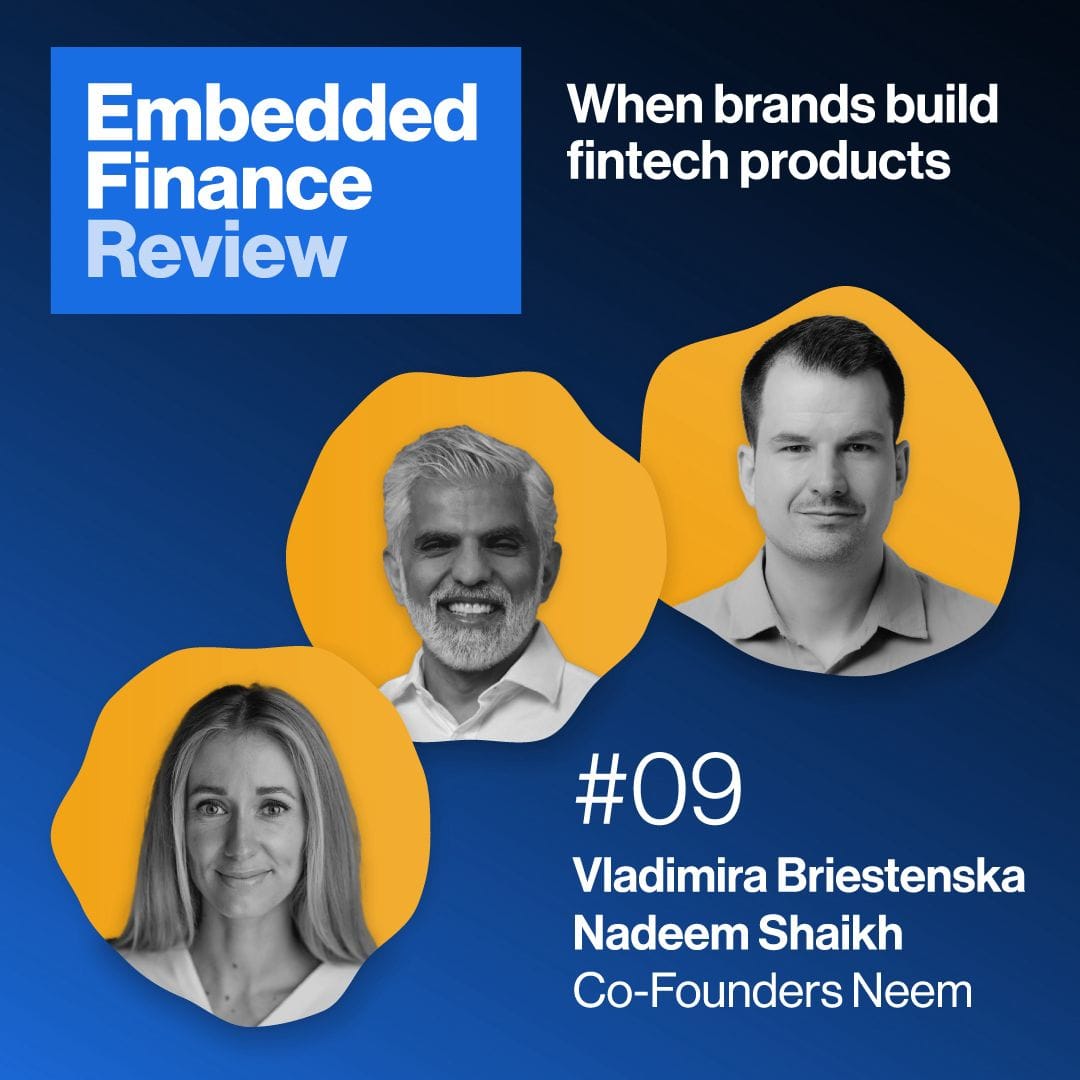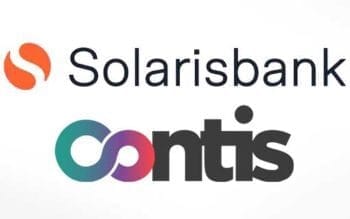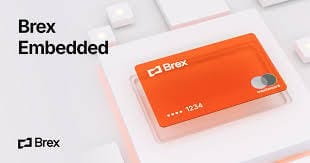Hi {{first name|embedded finance friend}}
Did you get your free ticket for our next Embedded Finance Review event already? On October 10th, we are inviting the whole ecosystem to Berlin for interesting talks, knowledge sharing, and networking. At this point, a huge thank you to our two sponsors:
Paynetics is a leading provider of embedded finance solutions, enabling businesses to seamlessly integrate payments within their products. We are dual-regulated in the EU and the UK and are principal members of Mastercard, VISA, UnionPay International, SWIFT and SEPA. Paynetics offers comprehensive embedded finance solutions to its B2B and B2B2C customers safely in one place, including card acceptance and issuance, payment accounts and transfers, delivered through APIs, SDKs or full-service white labels.
Visa is a world leader in digital payments, facilitating transactions between consumers, merchants, financial institutions and government entities across more than 200 countries and territories. Our mission is to connect the world through the most innovative, convenient, reliable and secure payments network, enabling individuals, businesses and economies to thrive. We believe that economies that include everyone everywhere, uplift everyone everywhere and see access as foundational to the future of money movement.
I am looking forward to meeting many friends and subscribers at this event. And I want to extend the same offer as last time: If you convince a friend or coworker from outside the fintech bubble to register and attend, I will include a personal shoutout in a future newsletter edition (please ping me if you achieve that).
And now lets dive in 👇
Advertisement:
Seeking impartial news? Meet 1440.
Every day, 3.5 million readers turn to 1440 for their factual news. We sift through 100+ sources to bring you a complete summary of politics, global events, business, and culture, all in a brief 5-minute email. Enjoy an impartial news experience.
How does embedded finance work in Pakistan?

Starting a podcast was one of the best decisions for me in 2024. There are many benefits, but what stands out for me is the opportunity to ask questions and learn about new areas.
Today’s episode is exactly that. I spoke with Vladimira and Nadeem about embedded finance in Pakistan. The two founded infrastructure provider Neem in Pakistan because they are extremely optimistic about the local fintech opportunity.
In this edition, we spoke about
- How Pakistan is different to Western countries
- Why Pakistan is an ideal country for a fintech infrastructure business
- Which industry are most receptive for embedded finance and
- What their forecast for the industry looks like
You can find the episode on Spotify, Apple Podcasts, and many other podcasting apps.
PS: I have shifted my podcast publishing schedule. Instead of publishing a new episode on the same day when the newsletter goes out, I am publishing the week before on Friday. Thus, if you want to listen to a new episode as soon as it is available, make sure to follow the show on your favourite podcasting platform.
Solaris shuts down former Contis business and goes live with its first co-branded credit card partnership

Last week was quite a week for German infrastructure provider Solaris. It started with the final steps of takeover of the co-branded credit card program of the German automobile club ADAC (Focus; German). And the week ended with the announcement that it is shutting down its activities under its Electronic Money Institution (EMI) licence (Solaris). Both news are actually tightly connected; let me explain how.
Back in 2021, when fintech infrastructure was in a big hype cycle, Solaris acquired UK-based banking-as-a-service provider Contis. Contis’ business relied on their British and Lithuanian e-money licences. A year after the acquisition, Solaris retired the Contis brand, and the activities became known as the Solaris EMI business. Solaris believed it was gaining two things from this acquisition. Firstly, an entry into the UK market. While Solaris can passport its German bank licence across the EU (yes, with some limitations and challenges), since Brexit, the UK market requires a separate licence. Secondly, Solaris owns a bank licence in Germany, but Contis has e-money licences in the UK and Lithuania. Thus, Solaris did not only get entry to a new market but also gained another licence in the EU. While there is nothing that German Solaris cannot do that Lithuanian Contis can do, it still might have been attractive to onboard certain EU customers onto the Lithuanian licence instead of the German one.
Fast forward to 2024. The landscape has changed a lot. The regulatory pressure in all markets that Solaris is operating (not just UK and Germany, but also Lithuania) has increased, which has resulted in higher costs to run the business. But the most important change has happened to Solaris itself. In the years before 2021, Solaris was extremely successful in partnering with unregulated companies to offer B2C and B2B banking products. But at that point, this meant working with neobanks. Today, many of these neobanks that had initially partnered with Solaris have left: some of them have obtained their own licence, such as Vivid or Finom, and others were acquired by companies that have their own licence, for example, Penta. What we all know today is that European neobanks are not very good customers for a banking-as-a-service provider. Today, it is a lot more interesting to partner with non-financial brands, or at least with niche industry players, that (hopefully) never go for their own licence.
For many reasons, Solaris never wanted to focus on the really small customers and always aimed for the enterprise deals. The partnership with Samsung for their split-pay product in Germany and the co-branded credit card deal with German automobile club ADAC are proofs for that. Which closes the story. While the market for neobanks got tougher, also the market for co-branded credit cards got reshuffled. In this market, a provider like Solaris is not competing against the usual banking-as-a-service providers that ‘only’ have an e-money licence, but it is competing against incumbent banks.
The acquisition of Contis was a great opportunity for Solaris in 2021. But a few years later, we all know that it did not work out. The rise of banking-as-a-service providers and the shift from neo-banks to non-financial brands have changed the market fundamentally. Solaris needed to adjust to this and is likely still in a transition process. I would expect that they will now focus even stronger on co-branded credit card deals and less on the standard banking-as-a-service offering. Or what do you think?
Brex launches embedded product

The US corporate expense management provider Brex announced that it is launching an embedded product (Brex Embedded). Does this mean that US companies have another banking-as-a-service provider to choose from? Well, not really. Let me explain.
The product name ‘Brex Embedded’ should be taken quite literally. US companies cannot use Brex to embed a white-label card product with their own branding, but they embed actual Brex cards. This may sound small, but it is quite an important element. Don’t get me wrong, I am also excited that Brex made this move, and this could be very beneficial for them and the market, but it is not another provider as we know it.
Therefore, the opportunity for Brex is actually twofold. Firstly, it will generate additional revenue with each partnership. They will likely directly charge their customers for the product usage, and they will most likely also retain (part of) the interchange. As we all know, the latter could easily be a multifold of the former. Secondly, the company will be able to use its new Brex Embedded partners as additional channels to acquire more customers for its core product. Brex might have a strong brand name in the US industry, but obviously not everybody uses them. What if your business relies on a specific industry ERP tool that launches a Brex Embedded integration with a strong feature set? This will likely be the strongest push for you to use Brex, even if you had decided previously against using Brex. On the other hand, the companies integrating Brex Embedded will have to think very carefully about how hard they want to push such an integration.
And if you wonder if something similar providers have tried already something like this, let me remind you of German corporate expense management provider Pliant. In addition to the credit card-powered expense management solution, it offers Pliant card-as-a-service. The major difference is that this product can be white-labelled, and embedders can apply their own brand.
Infra corner
Some additional short news stories from infrastructure providers:
- Last week, I re-shared the wallet offering of US provider Ansa which enables retailers to decrease payment costs and increase customer loyalty. The US banking-as-a-service provider Alviere has now launched a similar product (The Paypers).
- Stripe has integrated Capchase in the US. This enables Stripe’s US customer to provide a B2B BNPL product offering (Finextra).
- European banking-as-a-service provider Andaria is one of the few infrastructure provider with a (very) strong focus on sport clubs. In this video, they explain the benefits for clubs and fans (FF News).
- UK’s ClearBank just announced its expansion to the EU. Historically, the company had a strong focus on the financial service sector, but it will likely also cater to enterprise-sized unregulated players. In this interview, ClearBank’s group head of embedded banking (and subscriber) Paul Staples explains their positioning and the opportunity for them (The Paypers).
- Embedded finance is likely a big opportunity for many banks, but perhaps not for all. Amid the regulatory pressure in the US, a community bank decides to wind down its banking-as-a-service offering because they see a bigger opportunity for themselves in their direct banking products. (RBJ)
Insightful reads
- Thought leader Chris Skinner discusses the question of whether big tech will destroy banks. He doesn’t believe so and lists previous initiatives and their outcomes. (The Finanser) → Thanks to subscriber Christian von Hammel-Bonten for highlighting this piece to me
- Consultancy KMPG and front-end banking provider Toqio have teamed up to discuss the potential ROI for European corporates in embedded finance. (Toqio)
Lars’ embedded finance thoughts
Over the weekend, I shared on LinkedIn how I decide whether a company is a fintech business or a software-as-a-service company with a fintech product offering. According to my definition, only the latter is embedded finance. But that doesn’t matter that the former is less relevant; it’s just naming. What matters is customer value.
Nevertheless, I categorise a company as a non-financial brand with a fintech offering when the customer starts using the product for its non-financial features. I used vertical SaaS providers Toast (restaurants) and Mews (hotels) as examples. Both make at least 50% of their revenue with financial services, however, all of their customers start using them for their software part.
On the other hand, a corporate expense management solution like Brex or Pliant (featured above) attracts customers because of their credit cards. To me, this is a fintech business and not embedded finance. Even if they offer non-financial service features.
Perhaps another example are fleet card providers like AtoB, which just raised $130 million (PYMNTS). While I find the area of fleet cards extremely relevant for embedded finance, if you visit AtoB’s website, you can clearly see that cards and financial services are not only their core product but also their pure customer pull. So yes, it is a fintech company.
Somebody forwarded you this email? Subscribe for free.
Are you planning to start your own newsletter? Check out Beehiiv and get 20% off.








